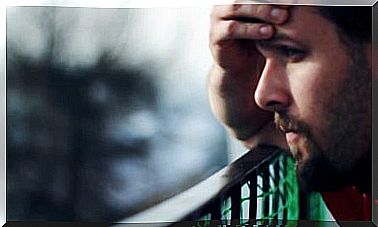Impulse Control Disorders

All human beings have urges or feel urges. However, most of them do not reach sufficient intensity to exceed the resources we have to control them. On the other hand, although this is sometimes not the case, the phenomenon does not occur frequently enough to be a source of significant suffering in our lives or in the lives of others – a condition to be able to speak of impulse control disorders or impulse control deficit disorders.
Well, before continuing, it is convenient to define a crucial term in this field: impulsivity. According to Moller, Barrat, Dougherty, Schmitz and Swann (2001), impulsivity would be a predisposition towards the execution of rapid, unplanned actions, towards internal or external stimuli, without any consideration towards the negative consequences that the reaction may have, both for the impulsive individual, as for others. This reaction can be visible or overt, like making a phone call, but it can also be hidden from the observer, like imagining a conversation with another person.
When the case is mild, the negative consequences are usually not so great as to cause alarm. The point is that these long-term cases can end up generating great pain: the disorder is there, but, due to its lightness, the person or the environment does not take action. Thus, we can witness a chronification and therefore a greater resistance to a subsequent intervention. In terms of prevalence, it is higher in men, although the difference seems to be narrowing and varies depending on the specific disorder.
Thus, in this article we want to talk about the main disorders associated with impulse control included in the DSM IV.

Intermittent explosive disorder
Anger or anger are the main protagonists in this disorder. The energy of emotion in these cases completely surpasses the person. Thus, to waste or dispose of it, it can be aggressive and cause significant damage.
We speak of a physical aggressiveness, but also a verbal one. We can see it in some abusers, but not all suffer from this disorder. Thus, we could identify in the person a continuation of childhood tantrums; Of course, the damages have nothing to do with it, since the strength of an adult cannot be compared to that of a child.
In these cases, patients tend to improve a lot when in consultation we offer them other outlets for that same energy. In this sense, preventive measures can be adopted, such as exercise, diet care or the abandonment of stimulant substances, but also ways and forms of direct coping can be facilitated when they feel that they are going to lose control, as can be the time out.
Kleptomania
In these cases, robbery or theft is the preferred way out that the person uses to try to calm the anxiety. It is a reinforcing instrumental behavior in itself by acting as a soothing or sedative; the least, in many cases, is what has been subtracted. Hence, it has nothing to do with whether or not the person has their needs covered.
Perhaps it is one of the disorders best known by the general public, since the characters that suffer from it are frequent in the cinema or on television. Perhaps one of the most iconic is Marie Schrader in Breaking Bad. It perfectly represents reality, we see the systematic denial of the problem at the same time that we see how the emotion of shame produces an energy that is channeled through the threat.
On the other hand, people with kleptomania in many cases, once they have taken the difficult step of recognizing the problem, downplay their behavior. They can argue that what they have taken is simply a detail or an object of little value that in no case will ruin the shop, supermarket, family, etc. from which it has been stolen. It has produced great good for her – to get rid of her anxiety – and it has not generated great evil for anyone. The mind is fantastic when it comes to shaping reality to find in it reasons to continue doing what reinforces us.
Pathological gambling (gambling)
In pathological gambling, the outlet to calm anxiety is the release of adrenaline produced by this activity. Gambling acts like an addiction, very expensive in terms of money. A player can win at a certain moment from the bank, but the law of large numbers tells us that in the long run they would always end up losing. Otherwise, it would not be a profitable business.
Thus, these types of players end up being victims, in their economy directly and indirectly in their relationships, of their tendency to gambling. We are talking about a problem that is usually detected when the consequences are important. At first, it is easy for both the environment and the person to normalize the activity: they are only small bets. At the first warning signs, the person usually looks for ways to hide his behavior, thus preventing anyone from getting between him and the game.
On the other hand, the activity itself ends up hijacking a good part of your physical and mental energy. He spends his downtime thinking about where he will play and how he will play, both to win and so that no one catches him. On the other hand, the person ends up placing more and more hope in the game to get out of the hole in which he is getting. Thus, he can come to embrace more and more unrealistic ideas: he has been losing for a long time, so that play in which he recovers everything is closer and closer. These types of thoughts are a cushion for the emotional impact that acknowledging all that he has lost has on him.
Among the impulse control disorders we can also find pyromania, trichotillomania, Diogenes syndrome or unspecified impulse control disorder . In any case, the three disorders that we have described serve to identify the common lines of this diagnostic category.









